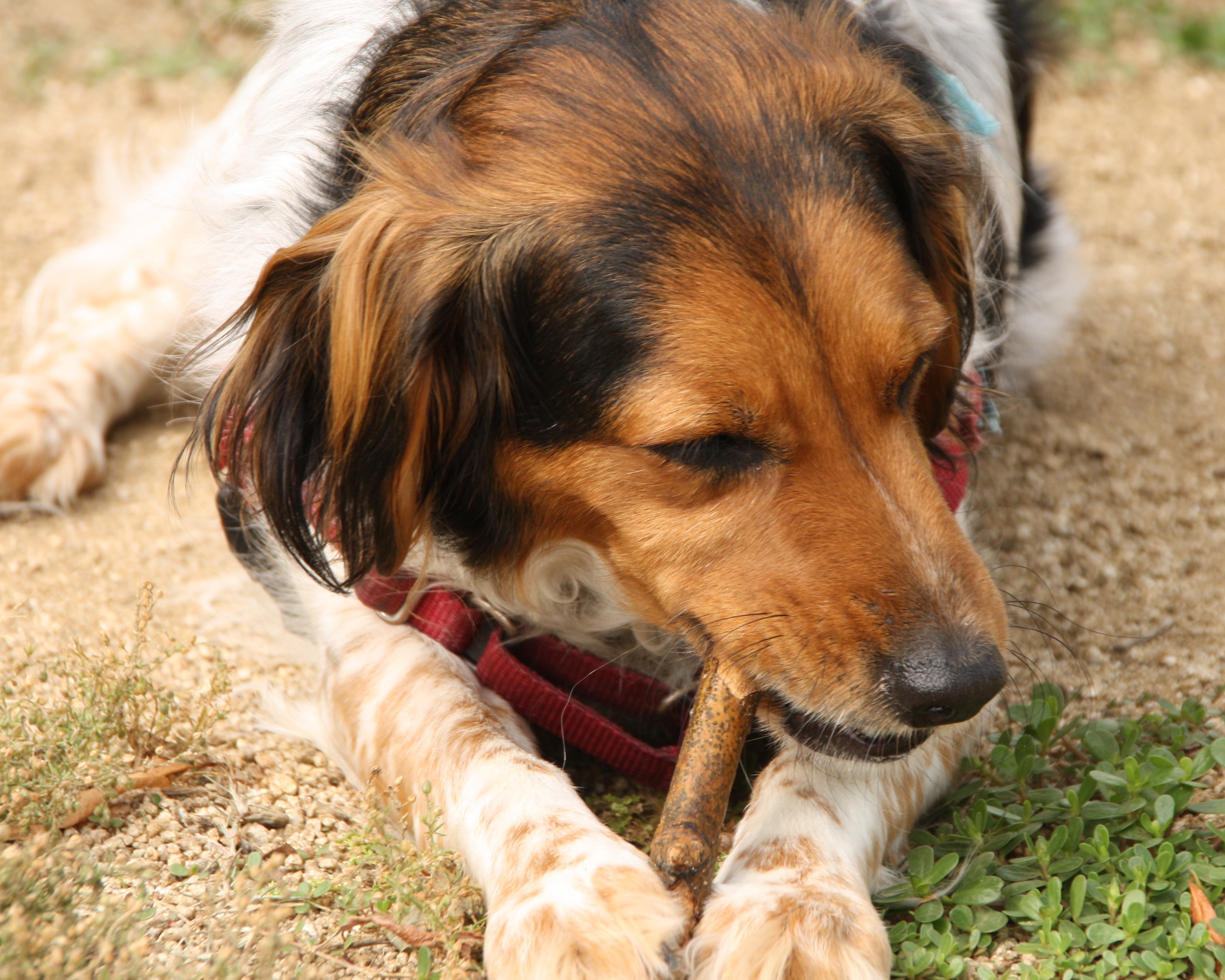In Part 1 of this 2-part series from her pet behavior advice column in The Roanoke Times, Dr. Megan Maxwell, CAAB, introduces some of the behavioral issues owners may face with a dog adopted from an animal hoarding home. In next month’s column, Dr. Maxwell will elaborate on some intervention tactics for addressing these issues.
Dogs from Animal Hoarding Homes: The Case of Bella, Part 1
As I walked into the living room, my client beckoned me to take a seat and then gestured gently toward the corner of the room. There beside the armchair I saw a large comfy dog bed and some stuffed toys and bones laying neatly beside it. “She won’t touch any of those,” the owner commented as my eyes fell upon the 18-month-old Golden Retriever mix flattened down low and still as a statue in the middle of the dog bed. Bella did not look at me or her new owner, instead keeping her gaze averted, her ears pinned back and her shoulders turned slightly away from us. “She won’t play,” the owner continued, “and she won’t eat or drink unless I hold the bowl under her nose. I have to carry her outside and then she simply drops onto the ground, pottying where she is and cowering the whole time. When we pet her, she shakes and looks away from us. My wife and I want to give this dog everything we can and our hearts are breaking to see how scared she is even after several weeks in our home.”
My clients had adopted Bella through a local shelter after she and 15 other dogs were seized from an animal hoarding home. Animal control officers suspected that Bella had been born into that home among many other litters and had lived with a single female owner who had provided no medical care or socialization. Bella’s reaction to her new home is sadly representative of many dogs born into or raised for long periods of time in animal hoarding situations. While some of these rescues rebound quite well and show resilience and quick recovery in their new home, others remain fearful over the first weeks and even months in their new environment.
Animal hoarding occurs when animals are kept in numbers that exceed their owners’ ability to provide for their basic needs, resulting in decreases to the animals’ well-being and quality of life. Although no single description accounts for every animal hoarding situation, assessments of animal hoarding cases typically show that animals are kept in unsanitary and crowded conditions, often forced to compete for limited access to food and provided with little to no medical care, training or socialization. These conditions can represent significant sources of neglect and chronic stress for dogs and can have long-lasting impacts on their behavior. A recent survey study1 compared the behavior of dogs adopted from hoarding situations with a control group of pet dogs not from hoarding situations and found that formerly hoarded dogs displayed higher levels of fear in response to people, dogs, and novel stimuli. This finding mirrors my own experiences and those of my colleagues who are regularly called in to address fearful behavior that can range from startling responses to noise, ducking away from touch, or mild submissive urination through to the near-complete shutdown of all movement as in the case of Bella.
Puppies pass through important stages of social development during their first months of life and a lack of socialization during some of these sensitive periods can have long-lasting impacts on dogs’ behavior later. For example, if dogs are not exposed to human touch or handling during their first months of life, they tend to be more fearful, aggressive, or resistant to human bonding as adults. The animal hoarder may be so overwhelmed by the number of animals or other factors in his or her life that no individual attention can be paid to puppies in the home. These puppies may not be let outdoors, let alone taken into public places for socialization and exposure to new sights, sounds, and smells. The removal of the dogs itself can be stressful when they are seized, transported, and relocated to the shelter, foster homes, or other holding locations and then into the adoptive home. These factors, combined with any medical conditions such dogs may be experiencing, can test the limits of many dogs’ abilities to remain relaxed, confident, and comfortable.
So what is the adoptive owner of such a dog to do? I have organized a grouping of five general areas of intervention – The Five P’s – that can be put into place for dogs who are exhibiting fearful behavior in their new home. Owners must 1) Provide a stable environment, 2) Pinpoint goals for gradual socialization, 3) Positively reinforce calm or confident behavior, 4) Pursue pharmacological intervention as appropriate, and 5) Practice patience, patience, patience! While each of these goals come along with some challenges, they can be well worth their effort in facilitating the behavior therapy and rehabilitation of formerly hoarded dogs. In next month’s column, I will return to the case of Bella and each of these intervention options to describe how they are used in more detail.
1McMillan, F.D., Vanderstichel, R., Stryhn, H., Yu, J., & Serpell, J.A. (2016). Behavioural characteristics of dogs removed from hoarding situations. Applied Animal Behaviour Science, 178, 69-79. To access this study, visit:
http://www.appliedanimalbehaviour.com/article/S0168-1591(16)30041-7/abstract






